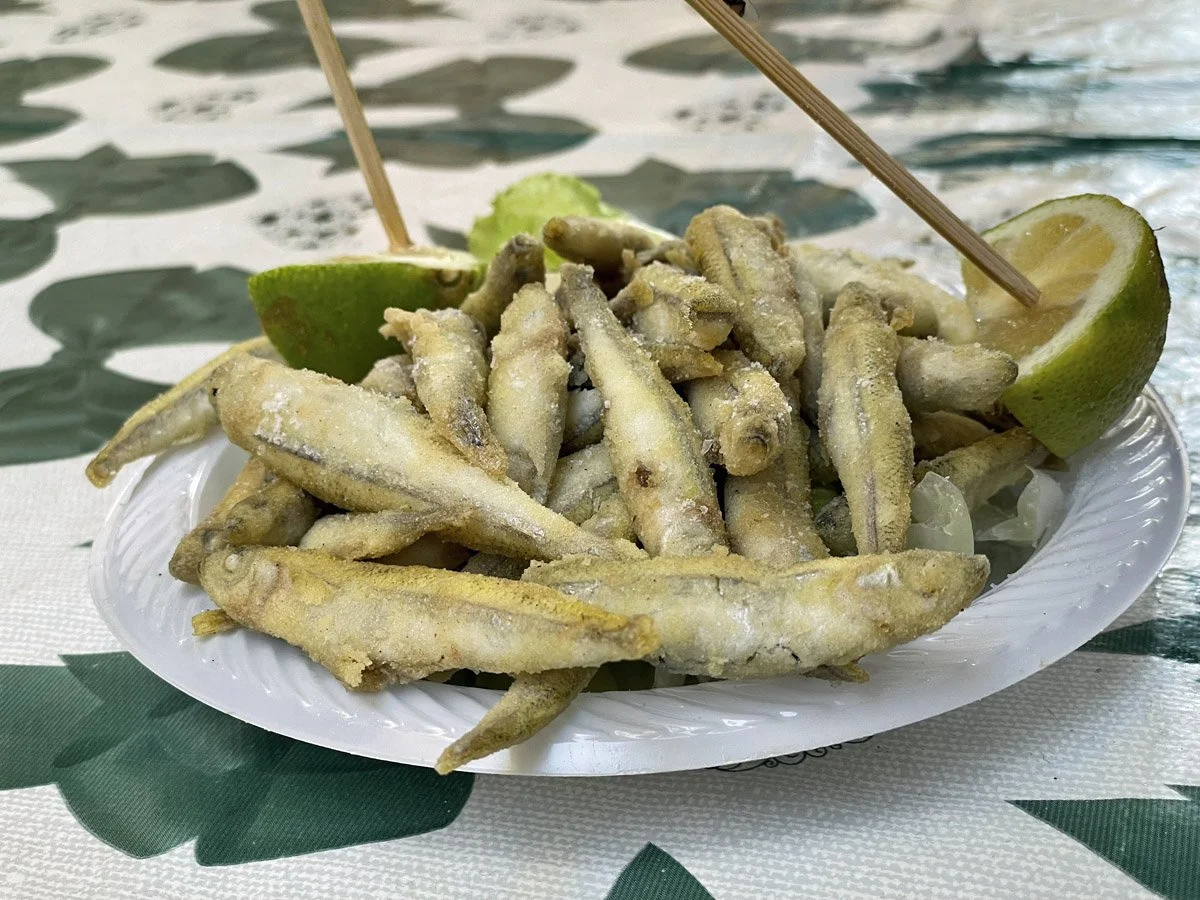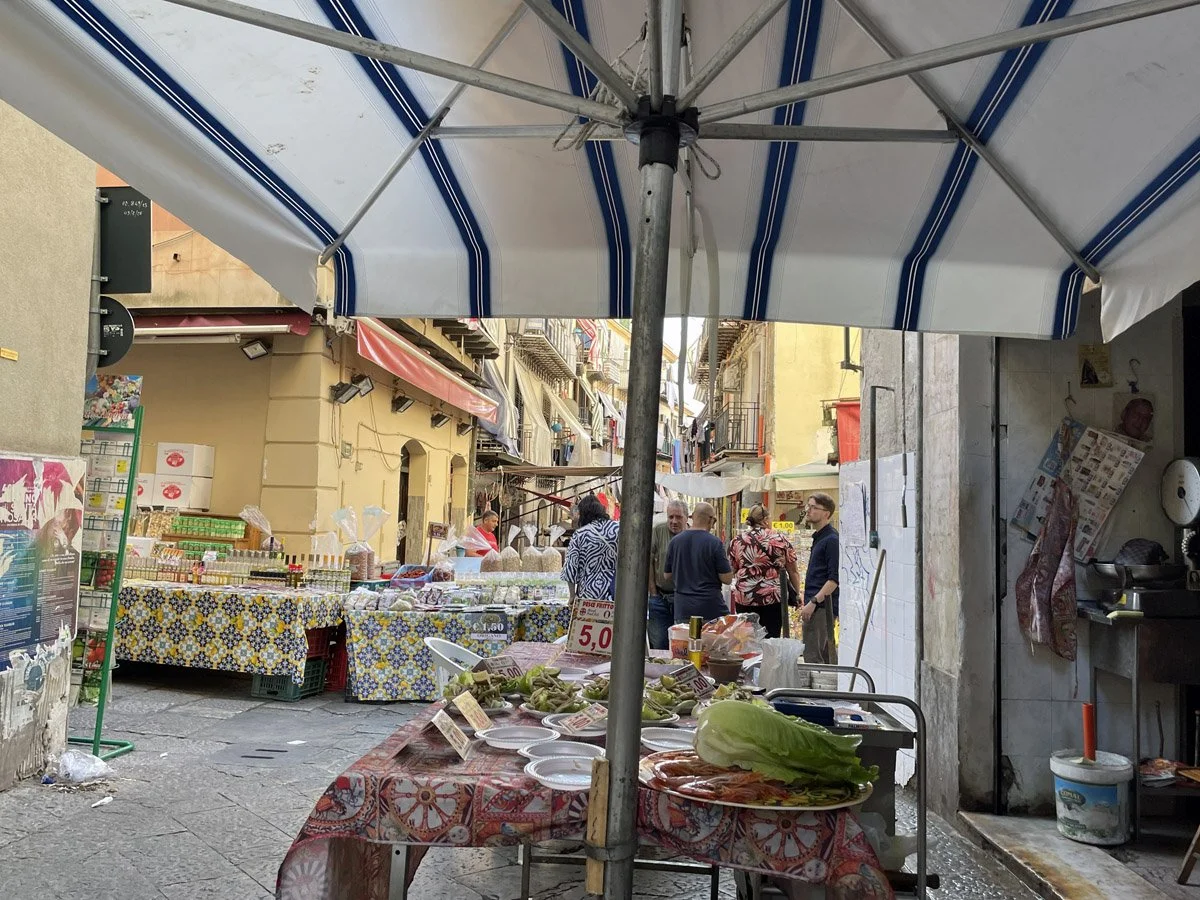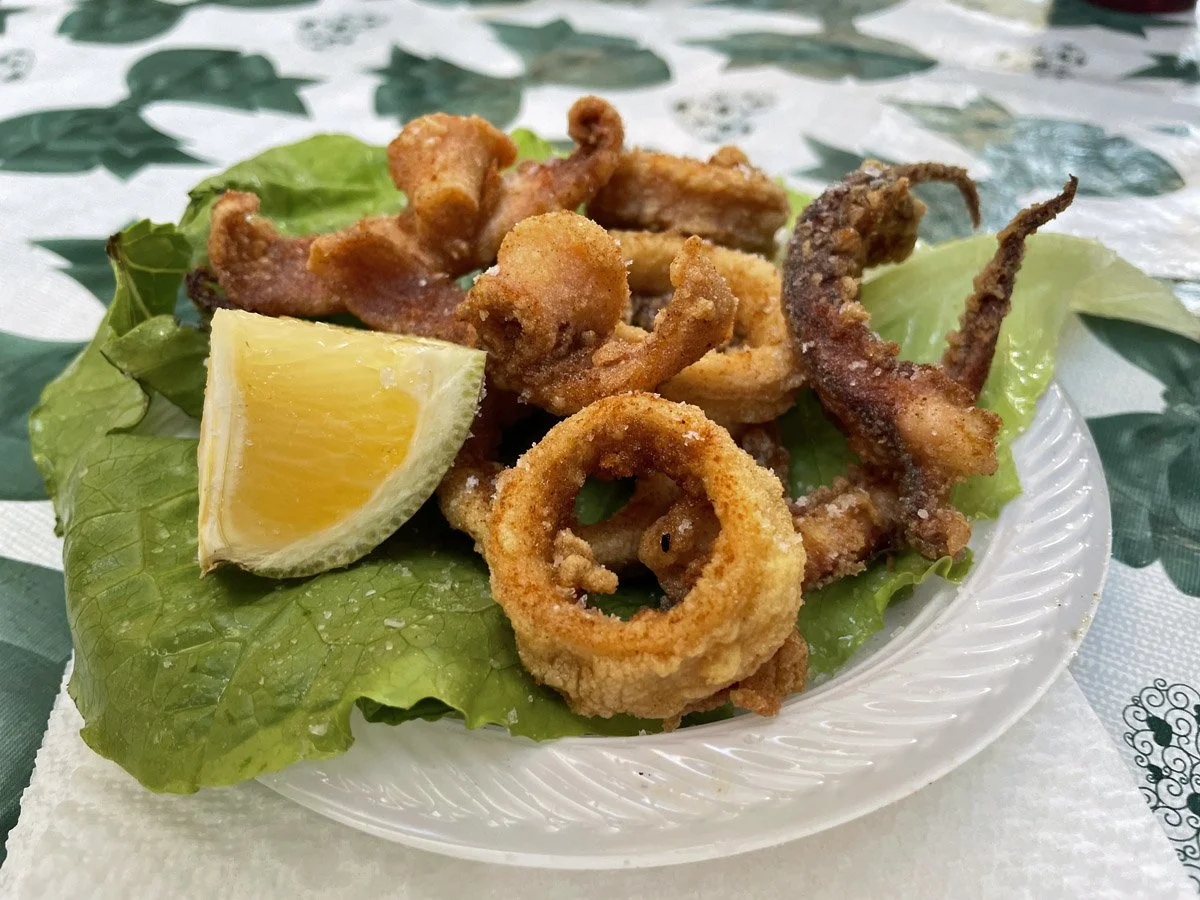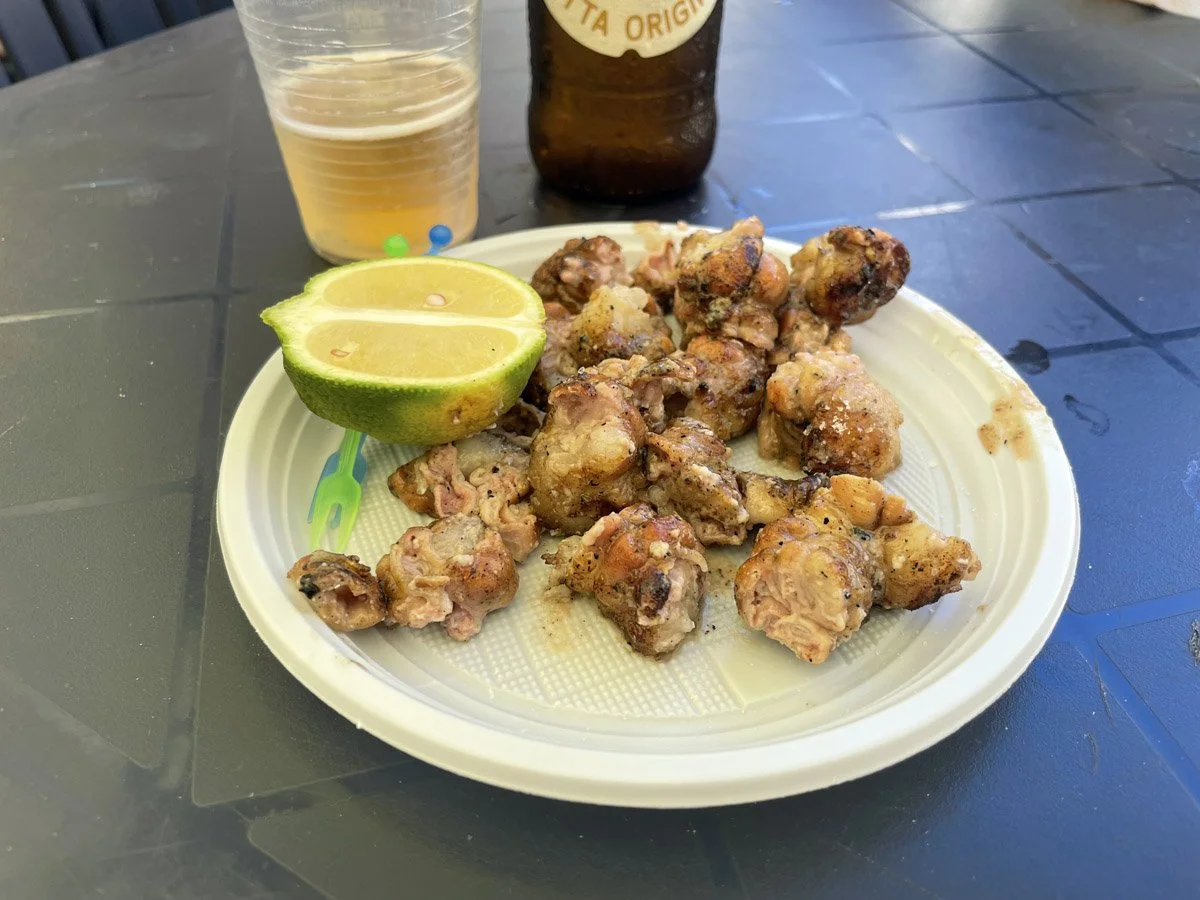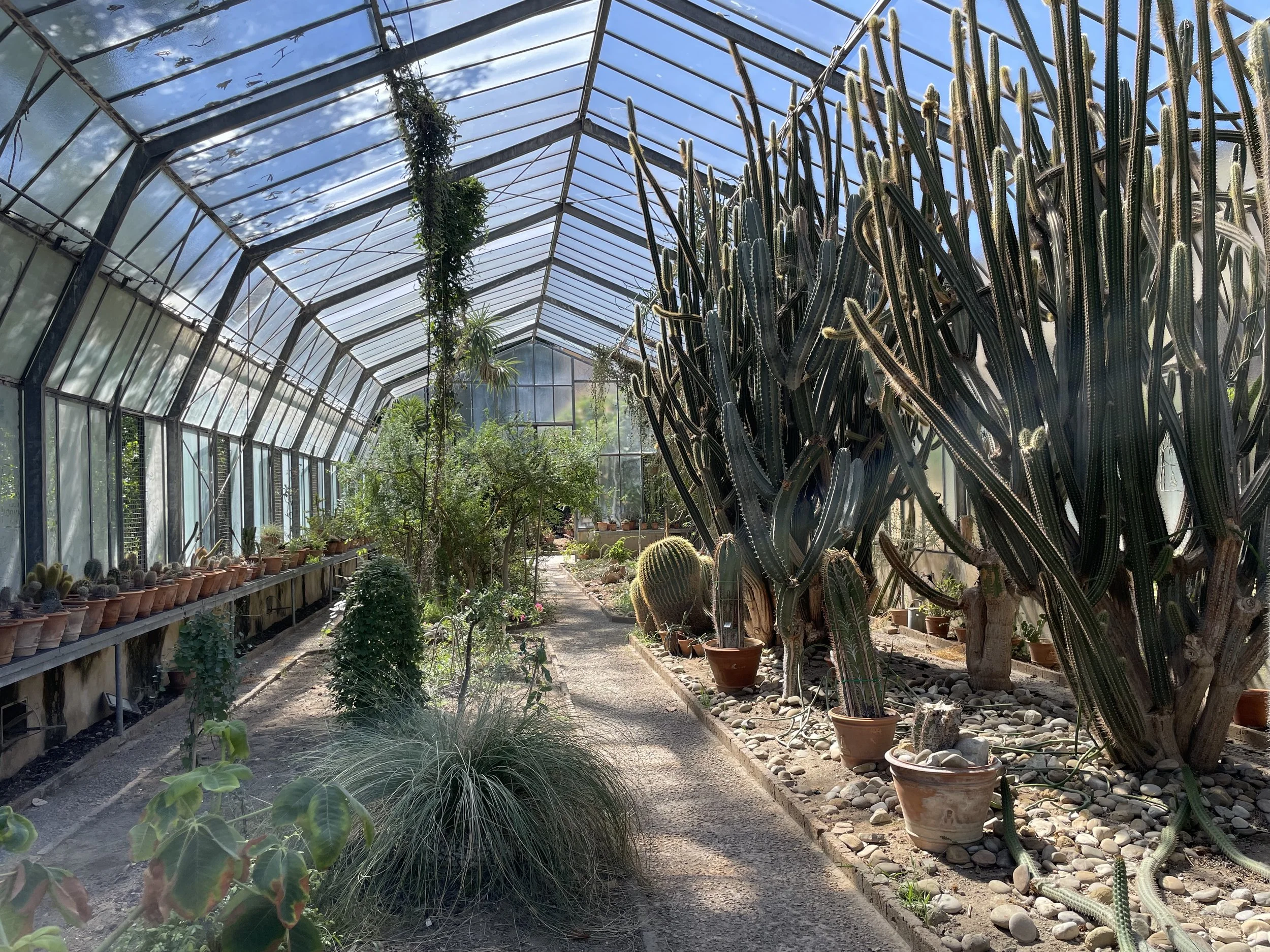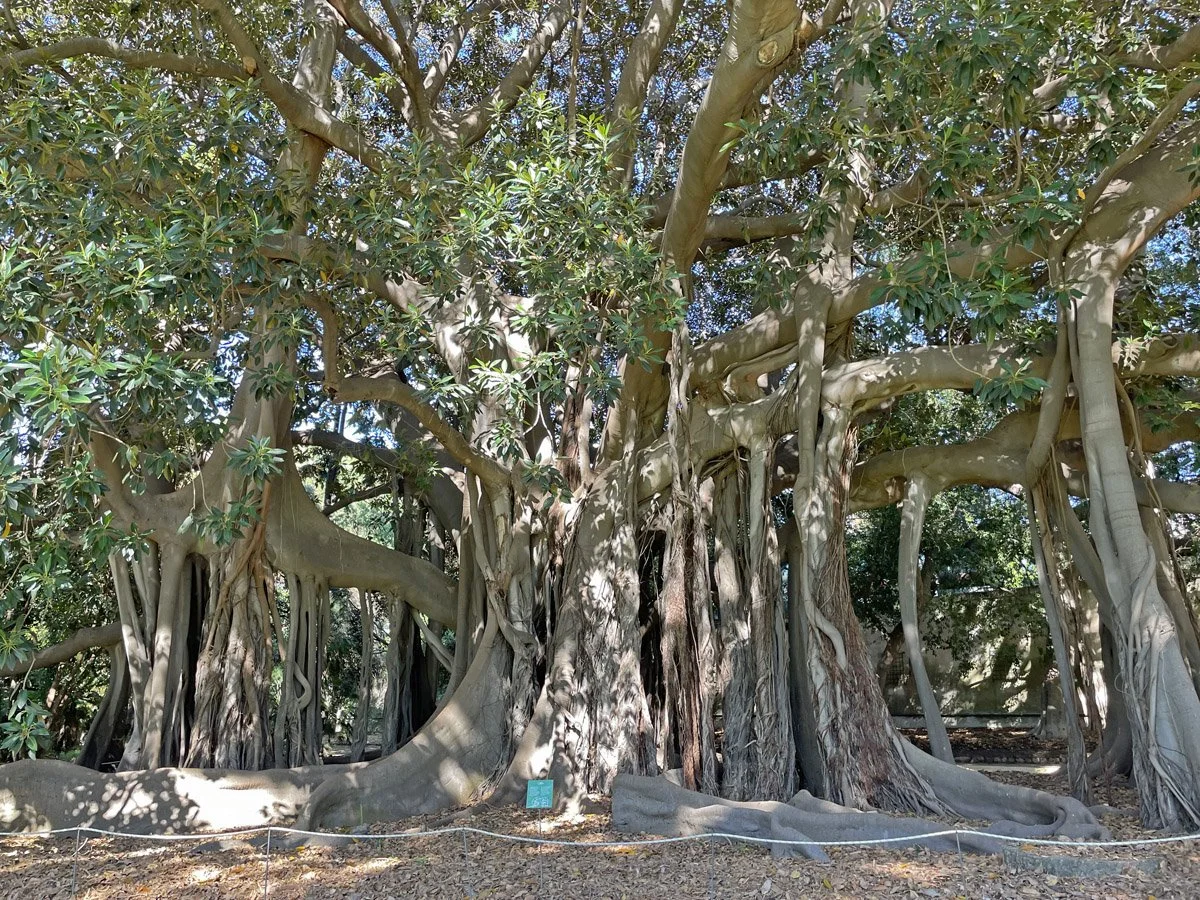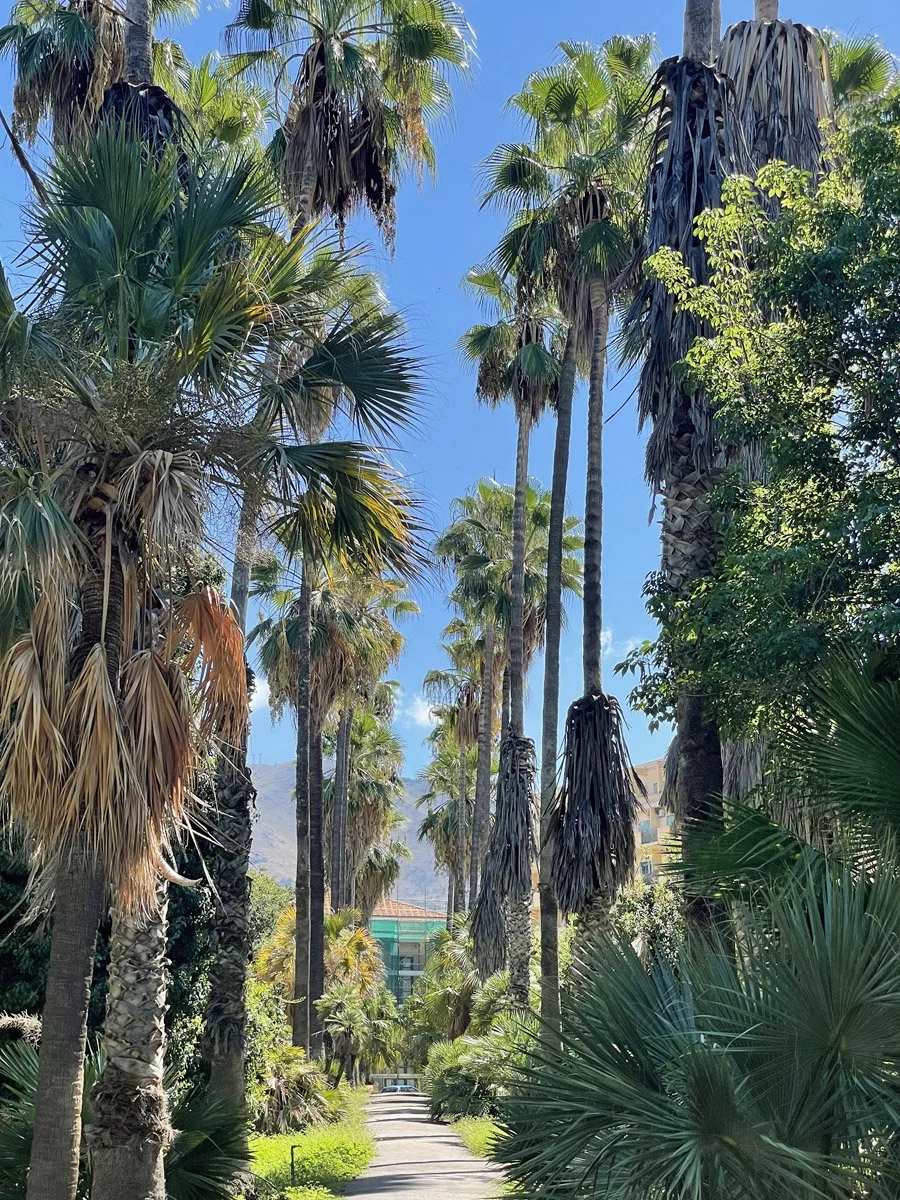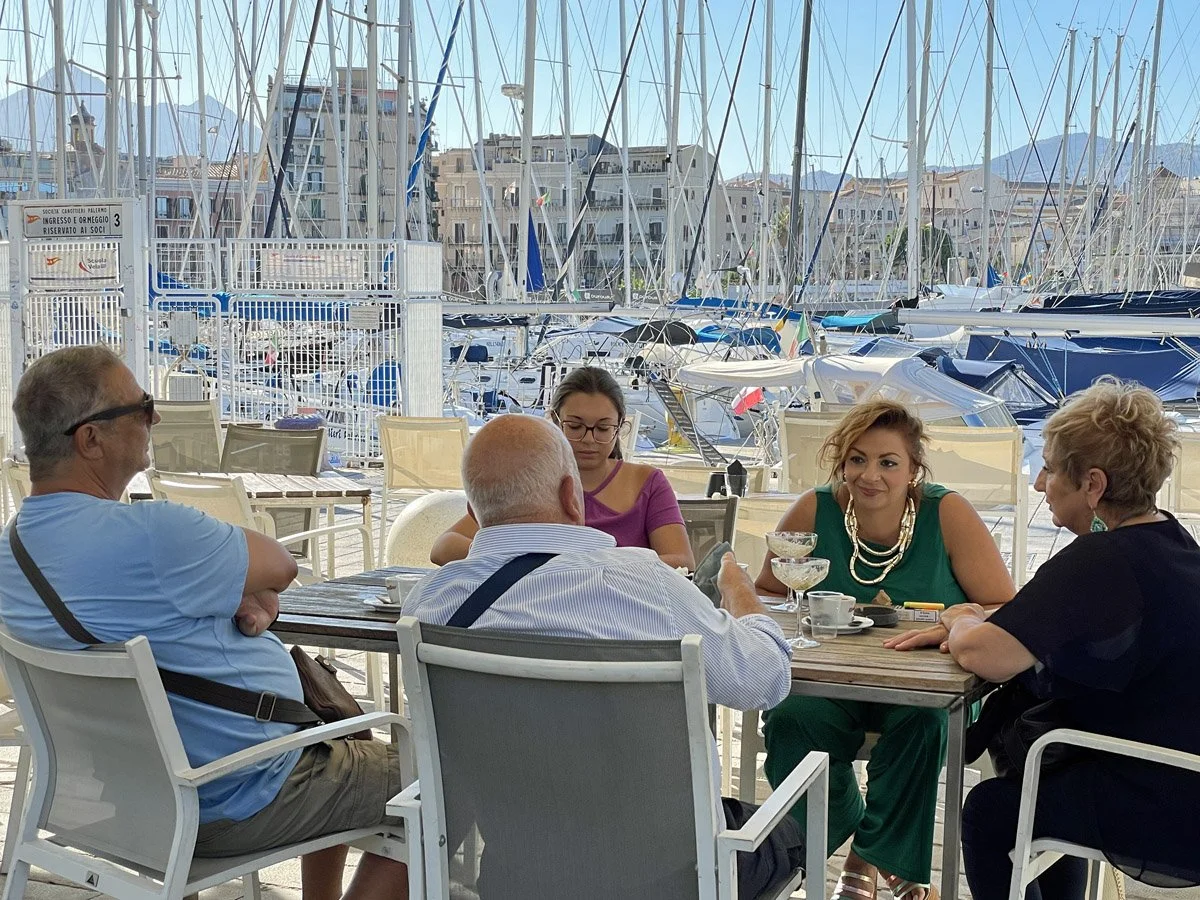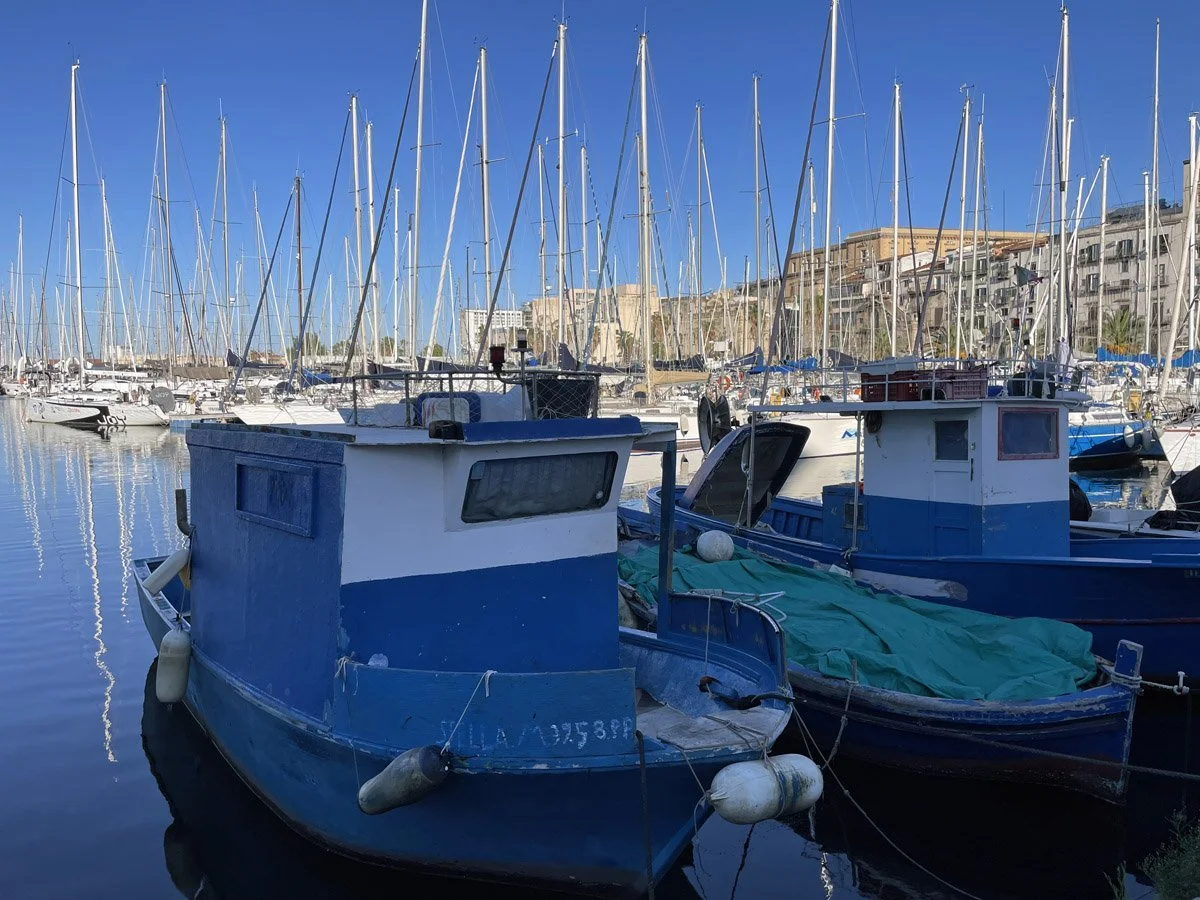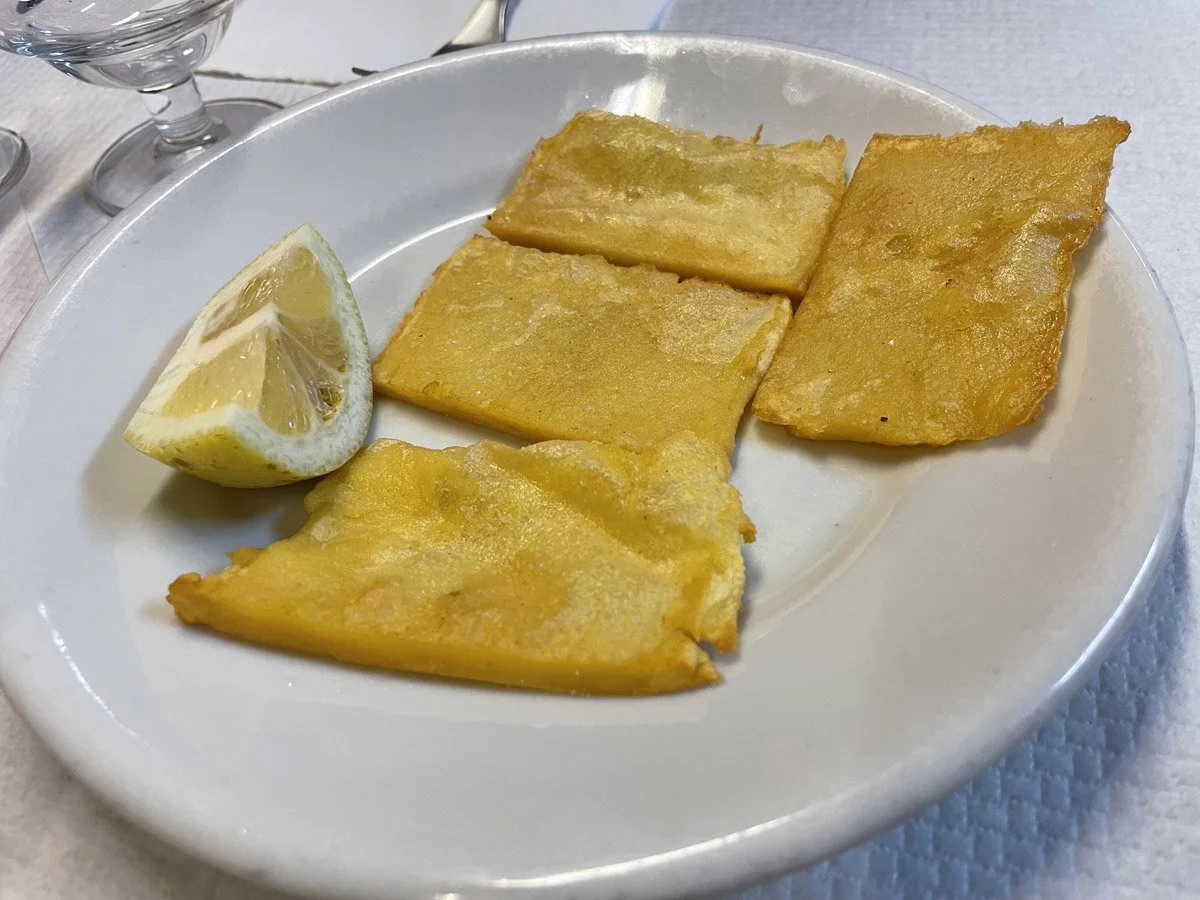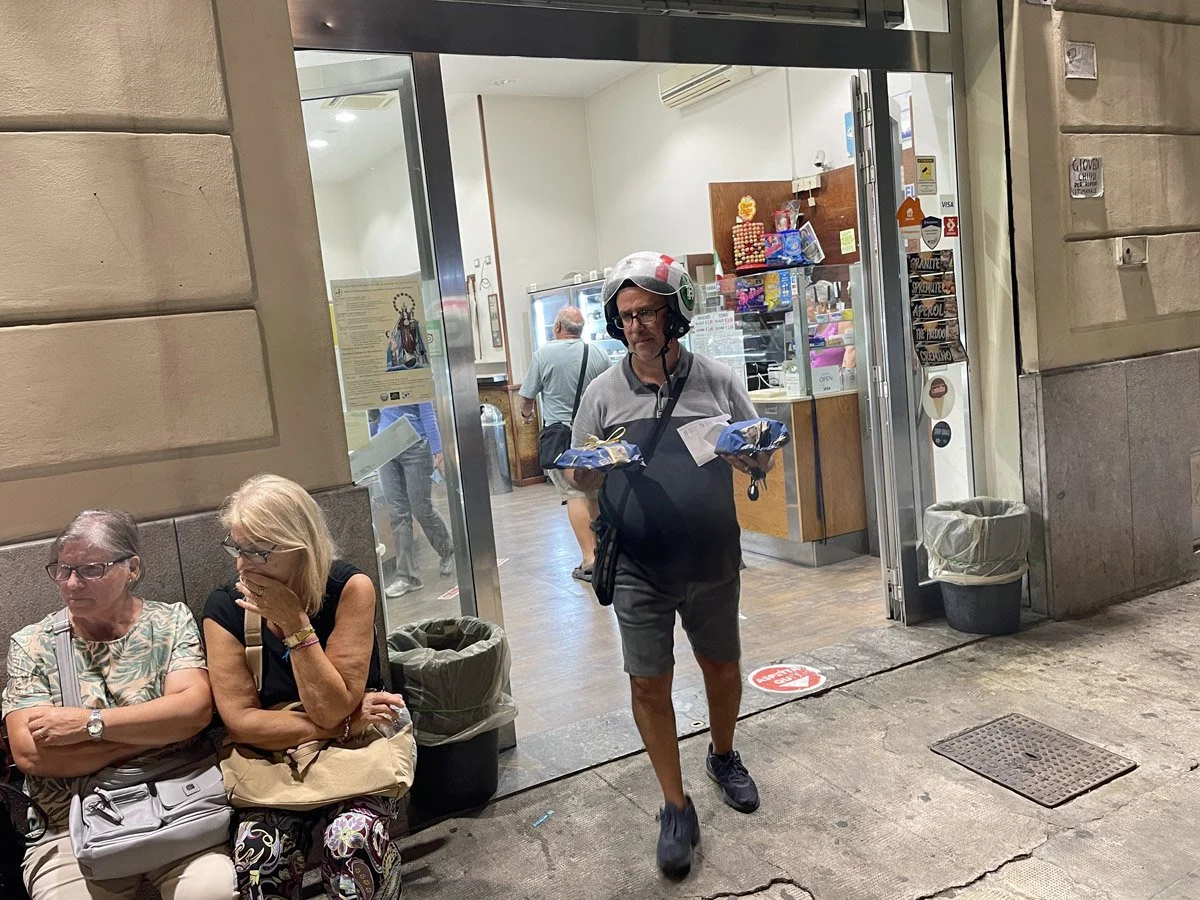Palermo
The ferry arrived at 6:30 a.m. in the harbor of Palermo, just before sunrise. The check-in time at my hotel had changed from 2 p.m. to any time in the morning—except between 8:30 and 10 a.m., when the owner had to take her children to school. After a cappuccino and a cornetto, I hurried to the hotel.
“Plans should be ephemeral, so be prepared to move away from them.”
Before each journey, I carry a motto in the back of my mind. This time it was the one above, by Anthony Bourdain. Never met the guy, but he feels like a kindred spirit. Because I wanted a hotel very close to the sea, in a spot not accessible by public transport, I had to plan each day and night in advance—something I normally don’t do. When there’s even a small change of plan, the whole house of cards can collapse. But so far, everything had gone according to plan.
Another fear I have before every trip is that my 91-year-old father might have a medical emergency the day before I leave or while I’m away. I’m always thinking about which flight I could take home if I needed to.
Mercato Ballarò
With just one night in Palermo and a morning train to catch, there was no time to lose. Lately, I hardly take the time to read up before my travels, so Palermo was a bit of a blank slate for me—except that I knew the markets were famous for their street food. It was still early when I wandered through the first market, Ballarò—one of Palermo’s oldest, with roots tracing back to the Arab domination of Sicily.
Any food market is a feast for my eyes. I can never actually shop for food, since my kitchen is in Amsterdam, but I always love looking at the market stalls. In the middle of the photo below is puntarelle—also called cicoria catalogna or catalogna chicory—and on the right, cicoria (wild chicory). I love leafy green vegetables and wish I could find more variety in Amsterdam. But they perish quickly, so it’s difficult to fly them in from far away.
Palermo Cathedral
I saw quite a lot of graffiti critical of tourism, and I can relate. I live in the centre of Amsterdam and see more tourists—including domestic tourists—than local residents when I step out my door. Because of this, I spend practically no time in local bars and have little sense of belonging in my neighbourhood.
Palermo’s port is projected to handle about 1.1 million cruise passengers in 2025, which is more than the city’s 625,000 residents. Then again, tourists spend money and are part of the economy.
Before eating anything, I came across a pomegranate juice stall. It’s hard to extract juice from a pomegranate, so a large glass set me back six euros. I’d never had pomegranate juice before—and it was incredible.
Mercato del Capo
Capo developed as one of the four historic markets of Palermo (the others being Ballarò, Vucciria, and Borgo Vecchio). It is located in the Seralcadio quarter of Palermo, which dates back to Arab rule.
A woman was frying fish. The fish are lightly coated in either Farina 00, Semolina flour or a half-half mix. Sicilian fried fish is never battered.
Citrus Gold Rush
When I saw the Teatro Massimo, built in 1897, and realized how enormous it is—the largest theater in Italy and one of the biggest in Europe—I understood that my preconception of Sicily as a poor country was only part of the picture.
The theater was constructed during the height of Sicilian emigration to the United States, between 1880 and 1924. Rural Sicilians were leaving their homeland because of land inequality, poverty, and widespread unemployment. In the decades before, lemons had become one of Sicily’s most profitable exports, making many families wealthy—wealthy enough to build a theater with a capacity of 3,000 (today reduced to 1,381 seats). But by the time it was completed, the lemon trade was already in decline.
There is evidence linking Mafia’s emergence to the 19th century lemon trade around Palermo. Wealthy landowners hired private guards (campieri) to protect their groves, oversee workers, and enforce deals — often through intimidation. These groups evolved into organized protection networks — the early mafia.
Economist Diego Gambetta (in The Sicilian Mafia: The Business of Private Protection, 1993).
Historian John Dickie (in Cosa Nostra, 2004).
Chiesa e Monastero di Santa Caterina d'Alessandria
The cannoli made by the monastery are famous, and you have to queue to enter the small shop and workshop where they’re assembled. The cannoli are enormous. I also bought a ticket to walk around the monastery, but I found it hard to reconcile the severed head of Jesus—and the many statues and paintings of his suffering—with the glorious sunshine outside.
For my peace of mind, I deliberately left out my fellow tourists. This journey wasn’t about people, but about finding both solace and solitude. The summer had been too chaotic at work; the weekends too short. I had spent too much time tending a garden that isn’t even mine. I wanted to have nothing on my mind except aperitivo and the blue sea.
La Vucciria
Another small Palermo market once included a slaughterhouse, which explains its name—likely derived from the French word boucherie. In recent decades, the market has transformed into a nightlife center, and I noticed plenty of small bars.
I also had my biggest food disappointment there: stigghiola. I had really looked forward to trying these barbecued meat skewers. The smell and flavor were good, but I simply couldn’t eat them—they were unbelievably chewy. I spent ten minutes chewing a single piece and calculated it would take me an hour and a half to finish the plate.
When ordering, I had asked which animal it came from—it was veal. But when I later checked the recipe, the skewers should have been quite tender: intestines filled with liver, onions, parsley—ingredients that shouldn’t be tough at all. Mine must have been made from meat with far too much connective tissue. Luckily, I’d ordered a cold beer on the side, so I just finished that instead.
Orto botanico di Palermo
Feeling not at all hungry in the afternoon and wanting to escape the tourists, I ended up in the botanical gardens. I asked ChatGPT to recommend a green, shady place, and it suggested the Palermo Botanical Gardens. Covering ten hectares, the gardens are quite large and were opened on their current site in 1795. The plant species are arranged according to Carl Linnaeus’s system of classification, divided into four quadrangles.
Quite special is the Ficus macrophylla, imported from Norfolk Island (Australia) in 1845. The photo doesn’t do its size justice—it’s far more impressive in real life. No other tree in Europe has foliage as large as this one.
La Cala
Even though I don’t lust after owning a yacht—or even a boat—I love spending time in marinas. This one has some very luxurious restaurants, but also a bar with a more relaxed vibe. Perfect for a cochineal-red Campari Spritz as an aperitif. Well, not really—Campari stopped using cochineal around 2006, so I suppose a Campari Spritz is now vegan.
Trattoria Trapani
P.za Giulio Cesare, 16, 90127 Palermo
Night falls quickly in Sicily in September. I found a simple trattoria; since I didn’t have a reservation, I had to share a table with a couple. I decided to go for the full three courses: antipasto, primo, secondo, and insalata.
But first they served me an unexpected amuse: Panelle (Sicilian chickpea fritters).
After the antipasto, I had a pasta alla Norma. By the time my secondo arrived—a thin slice of meat with a simple salad—I was already very full. To my shame, I could finish only a third of it. A wise lesson: never order antipasto, primo, and secondo in Italy—just go for two out of three.
After dinner, I lingered at a late-night gelateria near my hotel, but I was too full even for ice cream. The place was lively and crowded.
The next day, the intercity train to Roma Termini left at 10:15 a.m. I had to change trains in Messina to reach Catania. The carriages would be loaded onto a ferry to the Italian mainland. My train was scheduled to depart from platform 5.








